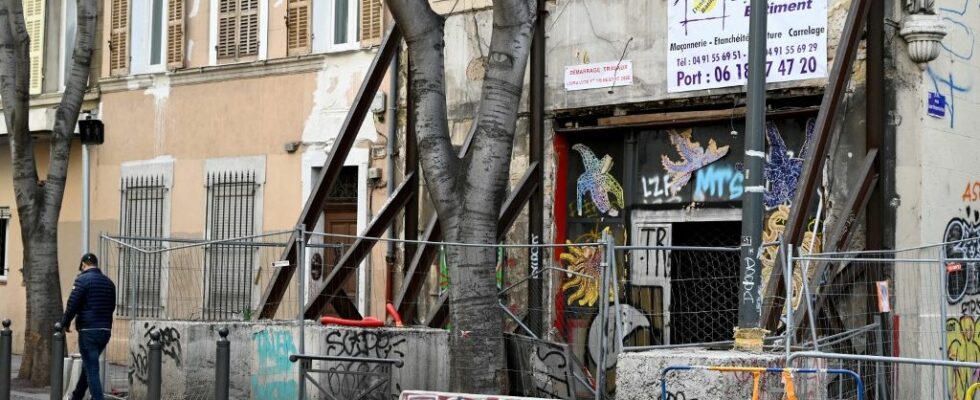It was November 5, 2018, four years ago already. A building collapsed rue d’Aubagne, in the city center of Marseille, taking with it the lives of all its inhabitants. Eight dead people who came to cry out an edifying reality that has become tragic: the second largest city in France is being eaten away by the scourge of unfit housing. The phenomenon is not new. In 2014, the so-called Nicol report, commissioned by the government, estimated that 40,000 Marseille homes, or 13% of the main residence stock, potentially fell under this same unworthy habitat. A total of 100,000 people live in slums according to the same report. But the death of these eight Marseillais in the Noailles district, followed by an endless series of emergency evacuations of buildings that were (re)discovered dangerous, had led the authorities, from the town hall to the State, to seize the file, faced with the scale of the phenomenon and the controversies.
But four years later, the figures speak for themselves: the scourge of poor housing has a hard life in the second city of France. According to statistics communicated this Thursday by the municipality, Marseille carried out 1,354 security interventions in 2021. Since the beginning of the year, this figure has exceeded 1,200. Every month, the city issues around twenty orders to urgently evacuate dangerous buildings. “The number of buildings evacuated each month remains stable,” said the deputy mayor of Marseille for urban planning, Mathilde Chaboche. The number of reports is falling but remains at a high rate. We remain in a complex situation, with incoming flows each month. »
Mold and housing crisis
And to estimate: “It is a structural crisis. We are also facing a bad building problem. We have states of building degradation over time, linked to the domino effect of buildings that lean on each other, to geological difficulties and to a lack of maintenance. It is therefore really necessary to initiate a rehabilitation of the housing stock on a large scale, and to create housing, social but also for the middle classes. Faced with a “real urgency” in this area, the city of Marseille announced last week that it wanted to produce 27,000 housing units by 2028, or 4,500 per year, including 2,300 “affordable” housing units.
In the meantime, on the desk of Me Aurélien Leroux, a Marseilles lawyer specializing in the defense of tenants affected by unfit housing, the pile of files has been constantly full since November 5, 2018. “But for some time now, we have been on more long-term issues than emergencies, notes the lawyer. After the collapses, after this earthquake, the town hall took matters into its own hands. The new team has put in place a major job. Rather, I face somewhat new problems of insalubrity, which are the consequence of poor housing on a daily basis. It could be mould, electricity problems… This mainly concerns single women, and in particular the third arrondissement. »
Sleep merchants in the crosshairs
The poorest arrondissement in France indeed seems to be an El Dorado for some investors, who also sometimes turn out to be slum landlords who are not quick to carry out the necessary work in substandard housing. “The profile is a lot of notables, lawyers, doctors, who do not even live in the region, reports Me Leroux. They live in Rennes or Paris, buy their property, often at auction, without knowing the tenant, and see it only as a real estate investment. However, the rent is also used to keep the accommodation in good condition. »
Since the collapse of rue d’Aubagne, the Marseilles courts have taken up the case, with several recent convictions of unscrupulous owners. “90 reports have been sent to the prosecution since the arrival of the new municipality and 29 administrative penalties have been pronounced against owners and 29 administrative penalties have been pronounced against defaulting owners”, recalls the city of Marseille in a recent press release.
However, with a limit, and not the least, as Me Leroux reminds us: “At the Bishop’s Palace (nickname given to the Marseille police headquarters, editor’s note), there is only one police officer specializing in questions of unfit housing. After the rue d’Aubagne, there were two of them. That’s the means allocated by the Ministry of the Interior…” On November 29 and 30, the State, local authorities, donors, promoters, collectives and citizens’ associations are meeting on the initiative of the city in the “States General of Housing”, in the hope of bringing out solutions against substandard housing. Proof if any, that the time of the crisis is still there…

